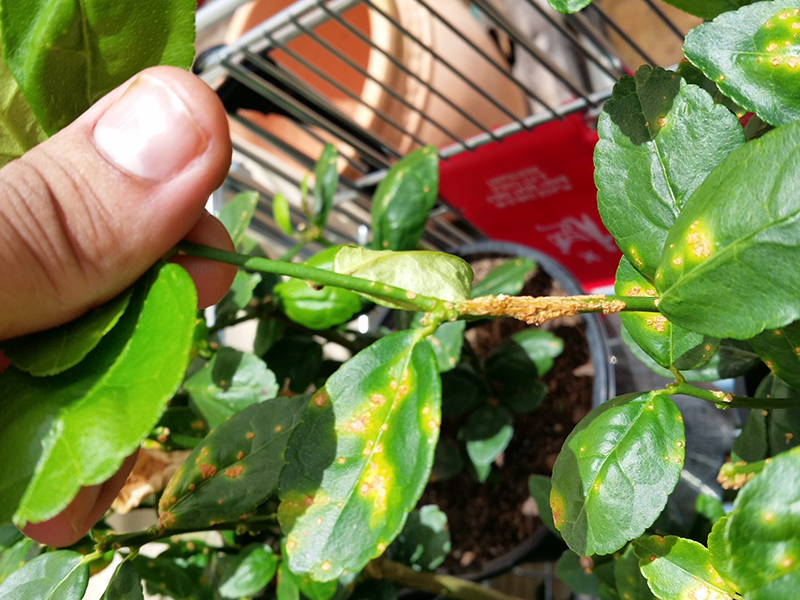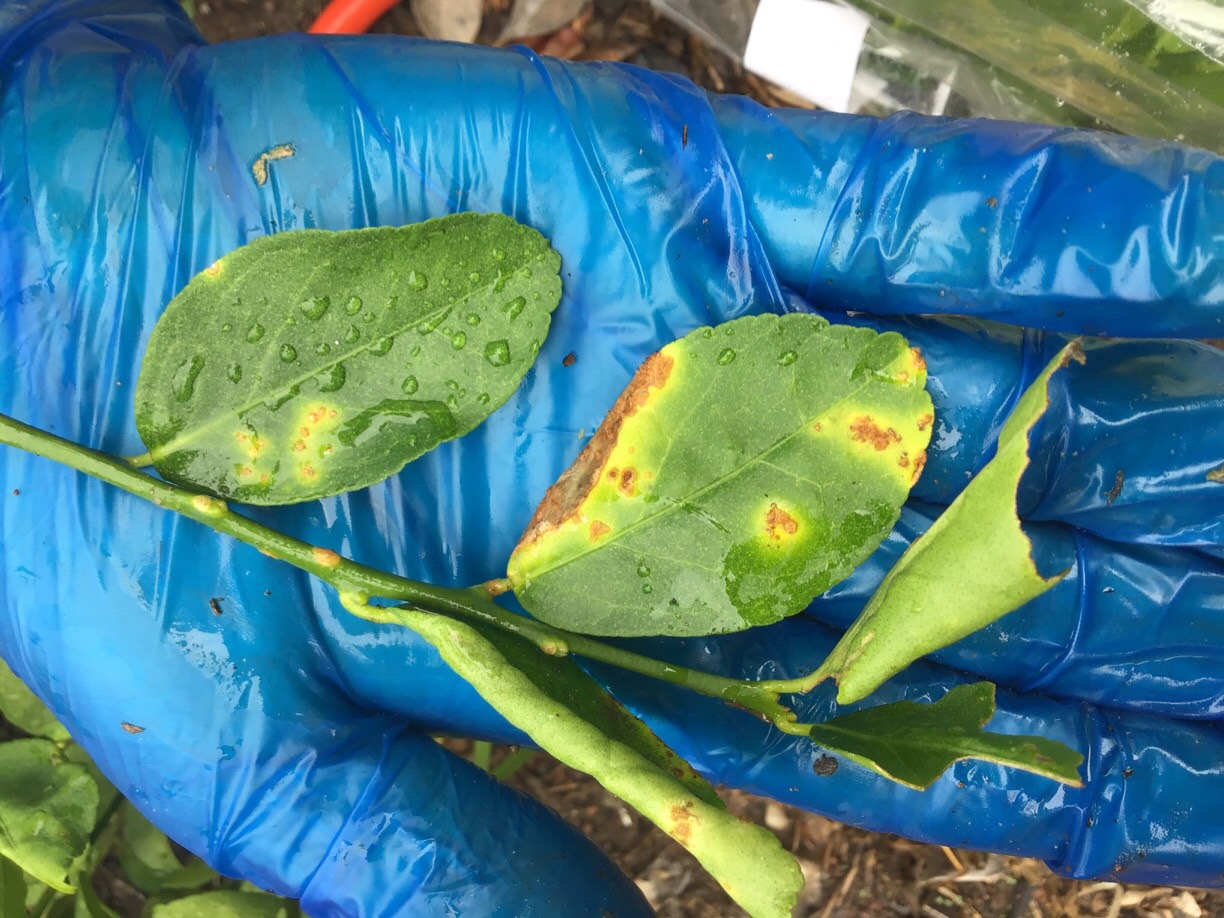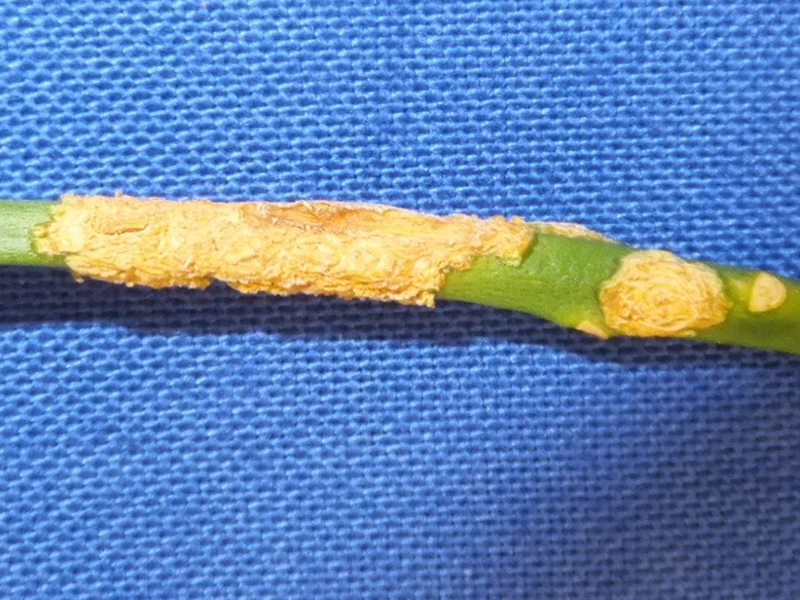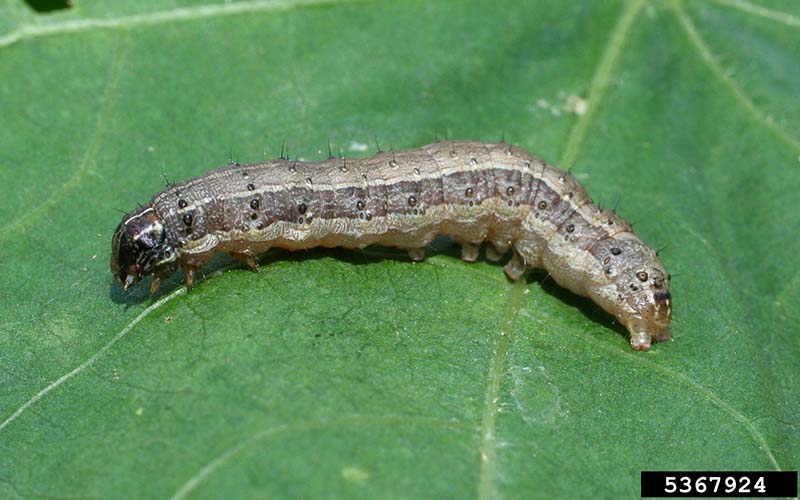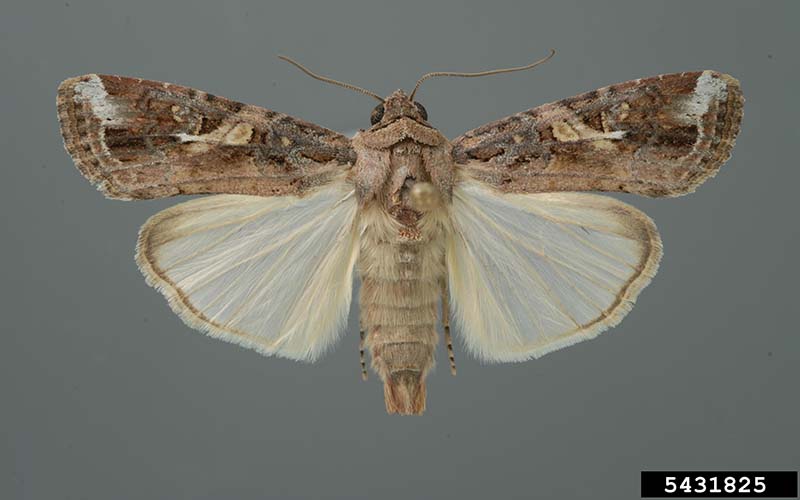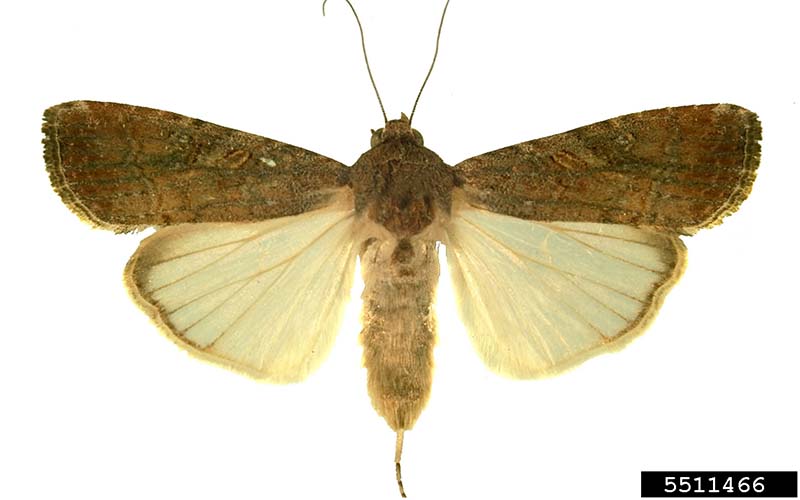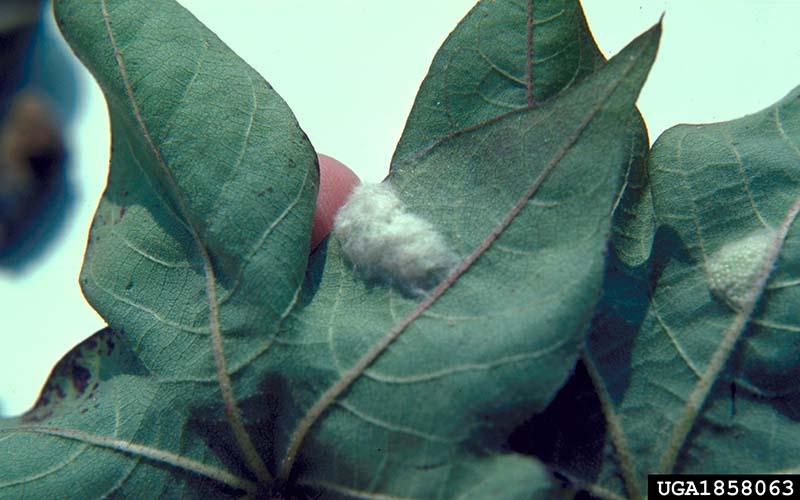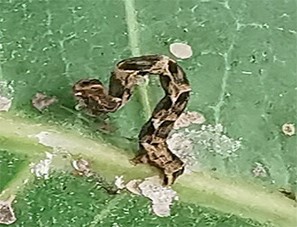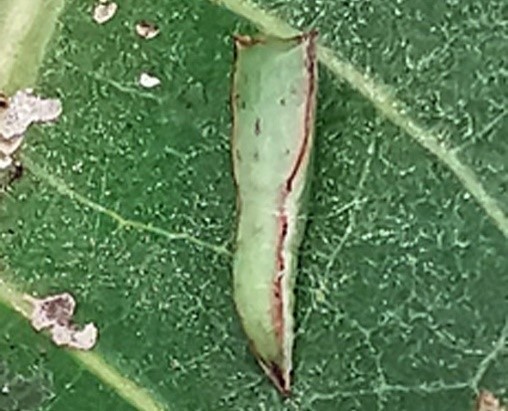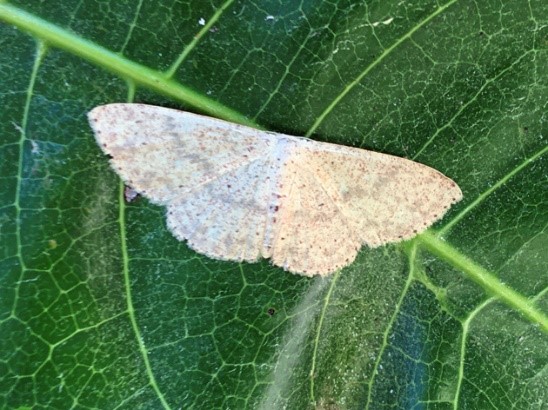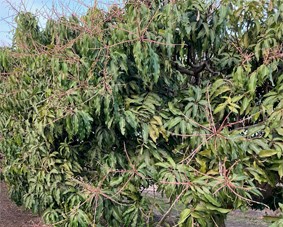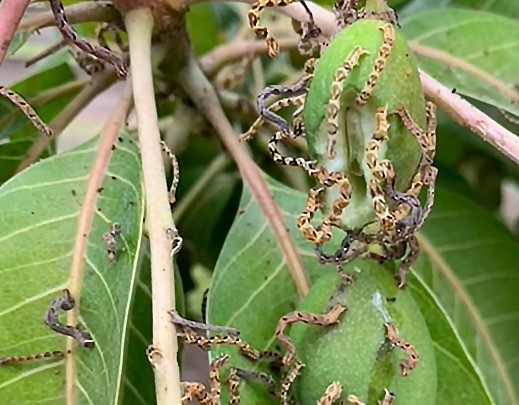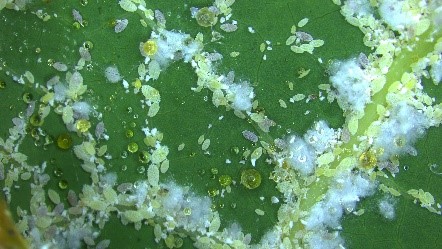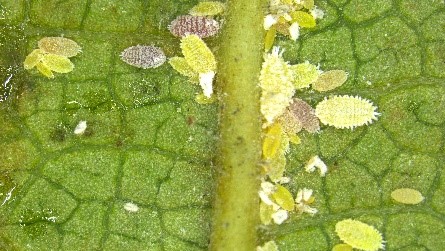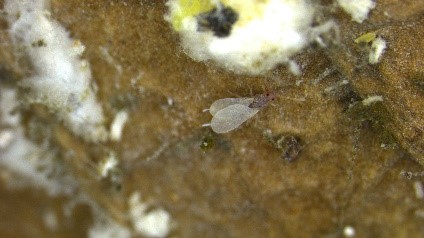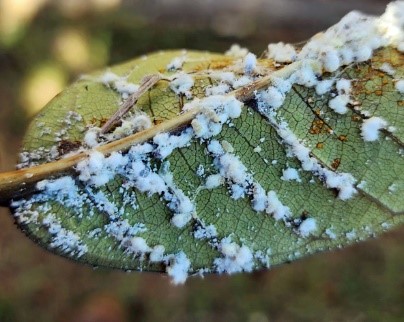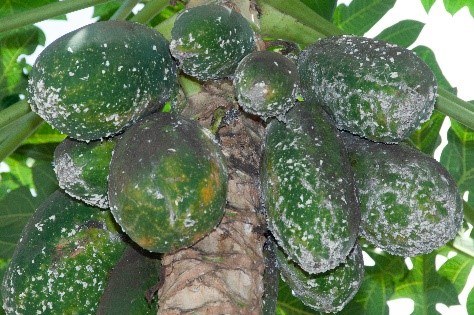Asian vegetables
Listed below are growing notes, information sheets, fact sheets, research results and Agnotes about how to grow a range of Asian vegetables in the Northern Territory (NT).
There are a number of different common names for many of the different vegetables. Read the Asian vegetable identification sheet PDF (909.3 KB) for more information.
Growers need to know about the Cucumber green mottle mosaic virus, which can affect melon crops.
Asian melons
Asian melons include luffa, sin qua, hairy melons and bitter melons - read the Asian Vegetable Identification Sheet PDF (909.3 KB) for more information on names of produce. These are all climbing annuals that grow best in the dry season.
For more information read the following:
Asian leafy vegetables
Asian leafy vegetables include Kangkong, Buk Choy and Wombok - read the Asian vegetable identification sheet PDF (909.3 KB) for more information on names of produce.
There are hundreds of different varieties, with a range of different growth habits - eg long or short stems, some suited to hydroponics etc.
- Wombok PDF (581.1 KB)
- Kangkong PDF (228.2 KB)
- Gai Choy identification sheet PDF (762.6 KB)
- Buk Choy identification sheet PDF (518.5 KB).
Bamboo shoots
Edible bamboo shoots are a tropical or subtropical crop. There are several different varieties that can be grown as a vegetable in the Top End. These vary in size, colour, texture and bitterness.
For more information read:
Edible ginger
Edible ginger can refer to either the traditional Zingiber officinale, or the Asian Galangal (Alpinia Galangal). The Asian Galangal is well adapted to tropical conditions, whilst the traditional ginger requires a couple of years to establish before harvesting.
Read more about growing edible ginger.
Okra
Okra is a tropical and subtropical plant. Most of the plant is edible, although the pods are the main harvestable section.
For more information read the following:
- Okra product description language - in Vietnamese PDF (1.5 MB)
- Okra product description language - in Cambodian PDF (1.7 MB)
Snake beans
Snake beans are commonly grown in the Top End. They produce beans around 30 cm long.
The major disease for this crop is Fusarium wilt, a soil borne pathogen.
Read more about plant pests and diseases.
For more information about snake beans read the following:
- Snake bean product description language - in Vietnamese PDF (1.5 MB)
- Growing snake beans in the Top End PDF (58.2 KB)
- Grafting snake beans to control fusarium wilt PDF (36.0 KB)
- Snake bean product description language [English] PDF (1.3 MB)
- Snake bean product description language [Cambodian] PDF (1.9 MB)
- Snake bean PDF (266.6 KB)
Watch the video Grafting snakebean or watch it on Youtube Grafting snakebean.
Pest and disease management
Insect pests
Visit the Northern Territory Insects Database to identify an insect pest and the damage it can cause.
For detailed information on the pests and diseases of vegetables read the field guide PDF (14.8 MB) to pests, beneficials, diseases and disorders of vegetables in northern Australia.
To get the field guide in Vietnamese go to the Territory NRM website.
Diseases
Cucumber green mottle mosaic virus (CGMMV), is a plant disease which infects infects watermelon, cucumber, melons, zucchini, pumpkin, squash, bitter gourd, bottle gourd and some species of closely related weeds.
Read about cucumber green mottle mosaic virus.
Research results
Search the online publications library to find the results of research regarding individual vegetable and plant types.
General information
For more information about the names of Asian vegetables read the Asian vegetable identification sheet PDF (909.3 KB).
For detailed growing information read the Vegetable growing manual PDF (6.4 MB).
To read a range of general horticulture advice and information go to General advice for fruit and vegetable growers.
Green manure
Green manure crops are grown to protect soil from erosion and to improve soil structure, chemistry and biological health. Read more about green manure cropping in horticulture PDF (165.6 KB)
Industry associations
For information about the citrus industry visit the Ausveg or NT Farmers websites.
Banana freckle
Banana freckle detected in the Northern Territory
A national response plan has been implemented to eradicate banana freckle.
Under the plan, only banana plants on properties where the disease has been detected will be removed.
The Phyllosticta cavendishii strain of banana freckle was first detected on Dwarf Cavendish bananas in the Batchelor – Rum Jungle region in May 2022.
It has since been detected in the Middle Point area, Fly Creek, Tiwi Islands, Marrakai, Humpty Doo, Girraween and Howard Springs.
If you are in the Darwin, Palmerston and rural areas, call the banana freckle team for a banana health check on 08 8999 2136 or email bananafreckle.nt@nt.gov.au.
Banana freckle is a fungal disease of banana leaves and fruit.
There is no risk to human health from eating banana freckle infected bananas.
It's a declared pest under Northern Territory (NT) Plant Health Act 2008.
The fungus is exotic to Australia and affects Cavendish and other varieties of bananas.
Banana freckle is a serious threat to the banana industry for commercial production as well as backyard growers.
The disease decreases plant health and productivity by reducing the amount of healthy leaf area, and affects fruit quality and appearance. This is of concern to the banana industry as it can impact production costs and marketability of fruit.
Property checks underway
Plant biosecurity inspectors are currently checking properties for banana plants, and signs of the disease around the greater Darwin and rural areas.
This includes properties close where the disease has been found.
If you receive a letter or reminder from the National Banana Freckle Response team, you can contact them to organise a suitable time for a plant health inspector to visit your property. Email bananafreckle.nt@nt.gov.au or call 08 8999 2136.
All properties close to where the disease has been found are being checked for banana plants.
If no evidence of the disease is found on your property, your plants won't be destroyed.
Appearance
Key characteristics of banana freckle include:
- 'sandpapery feeling' spots, mainly on leaves and fruit
- very small to large spots (1 to 4mm) and dark brown to black in colour
- spots running together to form streaks
- yellowing of the leaf, which can wither and die.
Spread
The fungal pathogen causing banana freckle is considered a ‘wet spore’ fungus. This means it lives well in water. It generally moves short distances by water droplet splashes and wind-driven rain.
The fungus is spread over larger distances by people moving infected fruit, leaves and suckers used for planting.
How to report
If you think you have seen banana freckle in the NT:
- fill in the online form
- call the exotic plant pest hotline on 1800 084 881 or
- contact the banana freckle plant biosecurity team by:
- calling 08 8999 2136
- emailing bananafreckle.nt@nt.gov.au.
Submit a sample
You can submit a specimen for identification to the Department of Industry, Tourism and Trade (DITT).
To find out how to submit a sample, go to the DITT website.
More information
Read:
- advice for NT banana growers PDF (2.0 MB)
- the banana freckle fact sheet on the Plant Health Australia website.
For information on managing banana freckle, go to the Australian Banana Growers’ Council website.
For biosecurity alerts and updates, go to the Biosecurity NT Facebook page.
Citrus canker
NT declared free of citrus canker
The Northern Territory (NT) has been declared free of citrus canker. You can now plant and move citrus plants in the NT.
From 12 April 2021, movement restrictions will no longer apply in Katherine and the greater Darwin areas.
Intrastate and interstate trade of citrus plants and plant material can resume to normal checks.
You should still check your plants and report any signs of the disease.
Citrus canker is a contagious plant disease that affects the health of plants including:
- lemon
- lime
- mandarin
- pomelo
- grapefruit
- some native species.
Check for the disease
Infected plants display lesions that can form on leaves, fruit and stems.
The lesions increase in size to 5-10 millimetres (mm) over several months.
Eventually the lesions collapse forming a crater-like appearance. They become surrounded by characteristic yellow halos. The raised edges of the lesion may appear slimy.
Plants with the disease may have sluggish growth and reduced fruit quality and quantity.
In severe cases infected plants will die.
Plants that can get the disease
Citrus canker can infect all citrus plants and some other species. Get a full list of potential host plants.
How it spreads
Citrus canker can be spread by:
- wind and rain
- landscaping equipment
- people through hands, clothing, or equipment
- infected or exposed plants or plant parts.
Increased risk in the wet season
There is a greater risk of citrus canker spreading during the wet season due to increased rain and wind.
Citrus canker symptoms are also more common after heavy rain and high temperatures.
It is important to check your plants during the wet season and report any changes.
Storms may also interrupt the work of plant health inspectors in removing plants from properties in restricted areas.
Citrus canker stakeholder update
The citrus canker stakeholder update provides updates to industry and stakeholders on the citrus canker emergency response.
- Citrus canker stakeholder update #07 - 12 December 2018
- Citrus canker stakeholder update #06 - 13 November 2018
- Citrus canker stakeholder update #05 - 3 October 2018
- Citrus canker stakeholder update #04 - 12 September 2018
- Citrus canker stakeholder update #03 - 27 August 2018
- Citrus canker stakeholder update #02 - 30 May 2018
- Citrus canker stakeholder update #01 - 8 May 2018
More information
Find out more about citrus canker on the Plant Health Australia website.
Fact sheets
Information in other languages
- What is citrus canker: Chinese PDF (1.4 MB)
- What is citrus canker: Greek PDF (1.4 MB)
- What is citrus canker: Filipino PDF (1.4 MB)
- What is citrus canker: Nepalese PDF (1.3 MB).
Contact
Contact the Department of Industry, Tourism and Trade by:
- calling or texting 0436 643 470
- emailing citruscanker@nt.gov.au
- submitting an online report.
Cotton
Cotton is a natural fibre and the most used textile fibre in the world. It is currently grown in more than 100 countries.
Australia is one of the world’s largest exporters of cotton. More than 90% of cotton produced in Australia is exported.
Currently, 98% of cotton grown in Australia is genetically modified (GM).
GM cotton varieties have helped the Australian cotton industry reduce pesticide use by 95% since 1993.
Cotton production in the NT
Cotton production is an emerging industry in the Northern Territory (NT). There are six growers in the market.
In 2019 and 2020, 800 hectares of cotton was grown in the NT across six properties in the Katherine and Top End regions.
Eighty per cent of the total area was rain-fed. Rain-fed farming, also known as dryland farming, uses rainfall as the primary water source.
It's expected that 80% of future cotton farming in the NT will use rain-fed cropping systems.
The remaining 20% will likely be supplemented by irrigation where adequate water resources are already allocated and matched to suited soils.
Cotton trials in the NT
Cotton trials are being carried out at the Katherine Research Station.
These trials are growing Bollgard3 cotton and use modern agriculture science and technology.
Combined, these methods greatly reduce the use of chemicals and water.
Find out more about the cotton trials on the Department of Industry, Tourism and Trade website.
More information
For more information about the cotton industry, go to the Food Futures NT Farmers website or the Cotton Australia website.
Contact
To find out more, contact the agriculture division by calling 08 8999 6058 or emailing investment@nt.gov.au.
Cut flowers
The cut flower and foliage industry is a small industry in the Northern Territory (NT).
It generally consists of tropical flowers and foliage in the Top End and Australian wildflowers and temperate exotics in Central Australia.
Listed below are links to Agnotes, growing notes and other advice about growing cut flowers in the NT.
Grower advice
Curcuma - hidden or surprise ginger
Curcumas or turmeric are perennial flowering plants grown for cut flowers and as nursery plants.
They have a dormant period during the dry season and flower throughout the wet season.
Read more information about curcumas.
Read about new curcuma cut flower varieties PDF (199.7 KB).
Ornamental gingers
Ornamental gingers range from the beehive shaped zingibers, which flower close to the ground, to the torch gingers - Etlingeras - and the red and pink alpinias.
Read more information about Darzing varieties PDF (358.2 KB).
Heliconia
Heliconias are a popular cut flower. The group broadly consists of numerous smaller psittacorum cultivars - such as Golden Torch and Petra, larger claw varieties and the large pendulous varieties.
Read more information about heliconias:
Heliconia varieties
Read information about the following heliconia varieties:
Wildflowers
The drier regions of Central Australia are suitable for growing Australian wildflowers such as kangaroo paws, gypsophila and Geraldton wax.
Read more about growing these varieties in Central Australia:
View the Flower Seed Sowing Calendar for Central Australia PDF (110.3 KB).
Pest and disease management
Refer to the information listed below to find out about pests and diseases which affect flower varieties in the NT.
Insect pests
Visit the Northern Territory insects database to identify an insect pest and the damage it can cause.
Read more about heliconia diseases PDF (63.9 KB).
Read more about orchid diseases in the NT PDF (46.3 KB).
General information
For more information about the types of cut flower varieties suitable for the NT read availability and storage conditions - nursery and cut flowers PDF (124.5 KB).
Research results
Search the online publications library to find the results of research regarding individual plant types.
The Darwin Collection of alpinia gingers
The Darwin Collection is a popular series of alpinia purpurata gingers bred from plants imported and evaluated by the horticulture division of the Northern Territory Government in the late 1980s.
The series consists of Darwin Dawn, Darwin Desire, Darwin Dolly, Darwin Lady and Darwin Sunset.
The NT floral emblem for the Centenary of Federation, the 'Federation Lady' also resulted from the earlier alpinia breeding program and is now in high demand throughout Australia.
Improving torch ginger - Etlingera
Torch gingers - the genus Etlingera - belong to the large Zingiberaceace family. There is a large variety of different colours, forms and sizes.
Torch ginger has a short vase life as a cut flower. Most varieties only last for six to seven days.
Seedlings from an intensive hybridising program to improve vase-life are being assessed and screened for their vase-life performance.
Advanced selections will then be evaluated by the Cut-flower Growers Group for suitability as commercial varieties.
Industry association
For information about the cut flower industry visit the websites of the Cut flower Growers Group, The Australian Flower Council or NT Farmers.
Fall armyworm
Fall armyworm is a caterpillar pest that feeds on a wide range of plants, including:
- sugarcane
- millet
- rice
- maize
- sorghum
- cotton
- wheat
- vegetables
- fruit crops.
There have been several confirmed locations in the Northern Territory (NT).
Appearance
Larvae
Fall armyworm larvae are green or brown with black lines along the body and around the spiracles. They also have numerous black hairs.
There is also a green form of the larva which has pale spots.
Image: Fall armyworm larva on cotton ©Russ Ottens/University of Georgia/Bugwood.org CC BY 3.0 US.
Pupae
Fall armyworm pupae are approximately between 13mm to 17mm in length, reddish-brown and shiny.
They are usually found in the soil under plants or fallen leaves.
Adult
Adult male moths have mottled light brown or grey forewings with a cream-coloured spot near the centre of the wing and on the tip. The male wingspan is between 32mm and 40mm.
Adult female moths have greyish-brown forewings with markings of grey and brown but do not have the distinctive markings of the male. The female wingspan is between 32mm and 40mm.
The hindwings of both males and females are pearlescent-white in colour with a brown border.
Image: Adult male (left), adult female (right) - ©Lyle J. Buss/University of Florida/Bugwood.org CC BY 3.0 US.
Life cycle
Adult females lay eggs onto the under surface of the lower leaves.
Eggs are:
- circular
- 4mm in diameter
- cream in colour when first laid and
- turn light brown prior to hatching.
Eggs are laid in single rows of between 100 and 200 and covered with ‘furry’ scales.
Adult female moths can lay up to 2,000 eggs in a lifetime.
On hatching, the larvae are green with black longitudinal lines and spots.
Image: Fall armyworm egg mass on cotton ©Ronald Smith/Auburn University/Bugwood.org CC BY 3.0 US.
Adult moths are nocturnal and are most active during warm, humid evenings.
Adult moths can live for up to 21 days depending on temperature and climate.
How they spread
Besides their reproductive capacity, fall armyworm adults are capable of flying long distances of up to 100km in a night.
They can also spread by movement of infested produce by air, road or sea.
Damage
Larvae are nocturnal. During the day, they are hidden in the foliage or at the base of plants.
At night, they chew on leaves and may also damage flowers and developing seed heads.
Larvae prefer to feed on grasses like sorghum and corn but will also feed on a wide variety of other plants including apple, papaya, cotton, millet and peanut.
As they mature, they begin to chew holes and consume the leaves from the edges inwards.
Mature larvae may give the leaves of a plant a ragged appearance. Excrement (frass) left by larvae will be present.
Larvae feed on the growing tips and fruiting bodies. When food is scarce, mature larvae will move in large numbers like an ‘army’ in search of food.
Image: Larvae damage sorghum ©Clemson University/USDA Cooperative Extension Slide Series/Bugwood.org CC BY 3.0 US.
Control measures
Control measures are already available for other caterpillars on crops in the NT.
These include Integrated pest management techniques based on cultural, biological and chemical control. These should also work on fall armyworm.
Chemicals
All pesticides should be used in accordance with label instructions and the NT Control of Use legislation.
For more information, read the chemicals fact sheet PDF (186.8 KB)
More information
Fact sheets
To find out more about fall armyworm, get the following fact sheets:
- fall armyworm PDF (544.3 KB)
- fall armyworm DOCX (4.2 MB)
- chemicals PDF (186.8 KB)
- chemicals DOCX (70.7 KB)
- armyworm PDF (990.4 KB)
- armyworm DOCX (2.1 MB).
Webinar
You can also watch a webinar below about fall armyworm, as part of NT Farmers' series with the Department of Industry, Tourism and Trade.
Contact
To find out about control measures, call 08 8999 2258 or email insectinfo@nt.gov.au.
To get advice on pesticide use, call 08 8999 2344 or email chemicals@nt.gov.au.
Forestry
Plantation forestry is the second largest production land use in the Northern Territory (NT) after beef grazing, with more than 47,000 hectare of the NT currently growing forest products.
There are 3 plantation operations in the NT where companies grow African mahogany, black wattle or sandalwood.
African mahogany, Khaya senegalensis, is being grown in the Douglas Daly region to produce high-value sawn timber used for flooring, fine furniture or veneers. The 14,000 ha, unirrigated plantation is the largest African mahogany plantation in the world, with a predicted rotation of 17 to 22 years.
Black wattle, Acacia mangium, is being grown on the Tiwi islands for woodchip to produce pulp. The approximately 30,000 ha of forest is expected to produce 200,000 and 400,000 green metric tonnes of wood chip for export each year.
Sandalwood, Santalum album, is grown in irrigated, mixed-species plantations to produce sandalwood oil for pharmaceutical and ceremonial markets worldwide. The more than 4,000 ha of plantations in the NT, centred around Katherine, are part of the largest area of sandalwood plantations in the world.
Grower advice
Listed below are links to growing advice for forestry enterprises in the NT.
African mahogany
Read the growing African mahogany in Northern Australia agnote PDF (278.9 KB).
Read the African mahogany grown in Australia, wood quality and potential uses report PDF (680.2 KB).
Teak
Insect pests and disease management
To identify an insect pest and the damage it can cause, go to the NT Insects database.
For Teak Leaf Rust, read the agnote PDF (59.1 KB).
Past research
Read the agnotes listed below for information about past research into forestry species for the NT:
- performance of a 16-year-old stand of teak in the Darwin area compared with trials in other areas of the NT PDF (65.5 KB)
- part 1: evaluation of the wood quality and utilisation potential of plantation grown Khaya senegalensis (African mahogany) PDF (1.2 MB)
- part 2: evaluation of the wood quality and utilisation potential of plantation grown Khaya senegalensis (African mahogany) PDF (240.8 KB).
General information
Read the agnotes listed below for general information about forestry in the NT:
Sustainable forestry and accreditation
For information about sustainable forestry, and forest certification schemes, go to the Australian Government's Department of Agriculture, Water and the Environment website.
Industry associations
For information about the forestry industry, go to the websites of Forestry Australia, the Greenlife Industry Australia, Forestry Industry Association Northern Territory and NT Farmers.
Fruit crops
General advice for fruit and vegetable growers
Listed below are links to general information and advice publications for commercial fruit and vegetable growers in the Northern Territory (NT).
They have been written by government experts to reflect the range of conditions found across the NT, and are not specific to a single crop or product. They provide general information that may be helpful to growers.
General agricultural advice
- How to grow vegetables in the Top End – a vegetable growing manual PDF (6.4 MB)
- Northern Territory Horticultural Produce Monitoring Program 2010 PDF (1.4 MB)
- Vegetable availability and storage conditions PDF (286.2 KB)
- Vegetable seedlings in containers PDF (54.4 KB)
- Vegetable sowing calendars:
- Fruit availability and storage
- Spray drift buffers - selecting plants for buffers and windbreaks in the Top End of the NT PDF (11.8 KB)
- Grafting fruit trees PDF (62.5 KB)
- Preparation and setting up of air blast sprayers PDF (67.8 KB)
- Establishing an orchard PDF (83.5 KB)
- Soil solarisation PDF (27.6 KB).
Market gardens and hobby farms
There are many small market gardens and hobby farms in the NT.
Growers and hobby farmers should educate themselves on the quarantine guidelines, integrated pest management, good farm hygiene and balanced fertiliser regimes.
Read the publications listed below for more information:
Vegetable field guide to pests and diseases
Correctly identifying pests, beneficials, diseases and disorders helps to minimise crop damage and assists with choosing management options.
Read the vegetable field guide PDF (14.8 MB) for detailed information to help you identify pest and disease symptoms in the field. It includes information about insect life cycles and biology, monitoring and pest management.
To get a Vietnamese version of the manual go to the website of Territory Natural Resource Management.
You can order a free printed copy of the guide by contacting the entomology division.
Grower licensing and accreditation
Permits and licences
If you are starting up a new plant nursery or horticulture business in the Northern Territory (NT), you can find out about the licences you might need to operate from the Australian Business Licence Information Service.
The information available includes Commonwealth and local authority requirements for your business to operate legally.
The service is provided free of charge. For more information, go to the Australian Business Licence Information Service website.
Accreditation
If you want your horticulture business to be recognised as meeting national or other standards, you can join a voluntary accreditation scheme. These schemes recognise best practice and are run by independent organisations.
The Nursery Accreditation Scheme Australia is a voluntary set of nationally recognised standards for nursery and potting media businesses. For details go to the Greenlife Industry Australia website.
Freshcare is a voluntary quality assurance program for fresh produce. For more information go to the Freshcare website.
Organic products are grown without synthetic chemicals and fertilisers. There is a national standard for organic produce, as well as certification schemes based on your business size and industry type. For more information, go to the National Association for Sustainable Agriculture Australia website.
Apply for Interstate Certification Assurance
If you export fruit or vegetables from the NT, you can apply for Interstate Certification Assurance (ICA).
Guava root-knot nematode
Guava root-knot nematode (GRKN) is an aggressive, microscopic parasitic worm. Its scientific name is Meloidogyne enterolobii.
GRKN affects the following:
- horticultural and agricultural crops
- ornamental plants
- some weed species.
The pest is considered significant because of its:
- wide host range
- high reproduction rate
- severity of induced abnormal growths
- impact on yields in preferred hosts.
Where it is found
Guava root-knot nematode is found in tropical to subtropical areas of the world including:
- Central and South America
- Africa
- Asia
- several US states
- some European countries (in greenhouse settings).
Detection in the Top End
GRKN has been detected in the Northern Suburbs, Palmerston and other rural, remote areas.
It was found on the following host plants:
- sweet potato
- cucumber
- capsicum
- eggplant
- butternut pumpkin
- snake bean
- zucchini
- chilli plants.
The pest can also be found on:
- melon
- guava
- cotton
- tomato
- ginger
- cotton.
For more pests, read the simplified host document PDF (137.9 KB).
Appearance
At most life stages the GRKN is microscopic. This makes it extremely difficult to detect, especially:
- in soil or
- prior to symptom development in infected hosts plants.
Life cycle
GRKN is reliant on live roots to feed and reproduce.
Juveniles hatch from eggs in the soil or root debris, and travel through soil to invade new roots. They feed on roots and this stimulates cells causing root tissue to enlarge and form an abnormal growth.
Mature females lose their mobility and become sedentary. They can:
- produce eggs without males
- lay eggs either inside or on the root surface.
The eggs hatch immediately or can become dormant. Eggs can survive in the soil (without a host) for up to 12 months.
The pest takes about 4 - 5 weeks to complete its life cycle.
Females can produce 400 - 600 eggs in this time.
Damage
Typical symptoms of GRKN infection includes abnormal growths or knotting on roots caused by the pest feeding.
This affects the plants ability to uptake nutrients and leaves it susceptible to secondary pathogens.
Above ground your plant may display:
- stunted growth
- wilting
- yellowing of leaves.
This can often be mistaken for water or nutrient deficiency. It’s important to check your roots for signs of the pest.
Spread and dispersal
GRKN, like most root-knot nematodes can't move far on its own.
In the soil, their movement is limited to a few centimetres. Annually they may move a few metres.
How it's spread
The pest can be spread or introduced to new areas by:
- movement of infested plant material - host plants with roots
- soil - as is
- soil attached to equipment, machinery or plant parts
- e.g corms, rhizomes, bulbs, or hosts and non-host plants with soil attached.
It can also be spread from property to property and on property through infested soil attached to footwear and tools.
It's important to maintain good biosecurity hygiene practices.
Irrigation water can also provide another dispersal mode on an infected property.
Prevention
To prevent spread of the pest you must:
- source planting materials from certified suppliers
- limit movements of soil
- follow good hygiene practices
- e.g. washing soil from machinery and equipment prior to being brought onto the property, chemical footbaths etc.
Commercial growers should have an on-farm biosecurity plan to reduce the risk of introduction of plant pests and disease onto their property.
How to report
If you think you have seen guava root-knot nematode in the NT:
- call the exotic plant pest hotline on 1800 084 881 or
- contact the Plant Biosecurity team by:
- calling 08 8999 2118
- emailing plantbiosecurity@nt.gov.au.
How to submit a sample
To prepare your sample for sending, you must:
- print a sample submission form PDF (207.3 KB)
- follow instructions on factsheet PDF (939.3 KB).
Samples can be posted or delivered to Berrimah Farm.
You can also send a sample to be identified.
Post sample
Plant Pathology Section
Department of Industry, Tourism and Trade
GPO Box 3000
Darwin NT 0801
Deliver to
Berrimah Farm, BAL Building
Makagon Rd, Berrimah NT 0828
More information
For biosecurity alerts and updates, go to the Biosecurity NT Facebook page.
You can also call 08 8999 2188 or email plantbiosecurity@nt.gov.au.
Industrial hemp licences
In the Northern Territory (NT), you need a licence to possess, cultivate, process or supply industrial hemp.
You also require a licence to conduct research into the production of hemp seed or stem fibre.
Industrial hemp is also known as low tetrahydrocannabinol (THC) hemp. Because it has very low levels of THC, it has no psychoactive (mind altering) effects if consumed.
Hemp seed and hemp seed oil can be used in food products, cosmetics and other industrial products. The fibre can be used in textiles, paper and building materials.
Regulations and licence conditions
Industrial hemp production is regulated in the NT under the Hemp Industry Act 2019 and the Hemp Industry Regulations 2020.
All licence holders must follow the rules outlined in the Act.
Who is eligible
An applicant or any associate is ineligible if they have been convicted of a drug related offence or other offences as defined under the Act.
An applicant must:
- be of good repute with regard to their character, honesty and integrity
- have a lawful and genuine reason to require a licence
- ordinarily reside in Australia
- not be affected by bankruptcy action.
Licence conditions
Licence holders must meet the below conditions.
Other conditions may be imposed on a licence at any time by written notice to the licensee.
Licence holders must:
- notify the government of any changes to the information provided in the application
- notify the government of the start of cultivation process
- report annually on activities carried out under the licence
- use secure consignment notices to accompany material being supplied by the licensee
- only use industrial hemp material be supplied by a person authorised to do so under the NT Act or a corresponding law in another state or territory or under Commonwealth legislation.
Commercial licence holders
Additional commercial licence conditions under the regulations include:
- a cultivation area of at least 2 hectares
- restrictions on use of material for stock feed
- limitations on extraction or processing of hemp plant material.
Conditions that may apply to individual licences
Other conditions can be defined in the license as approved such as:
- ensuring adequate labelling of seed stored on the premises
- destroying crop residue and ‘volunteer’ plants
- providing records of industrial hemp sowing, harvest, processing and supply reports
- notifying the government and NT Police of any theft.
Apply for a commercial industrial hemp licence
A commercial licence authorises the licencee to possess, cultivate, process or supply industrial hemp for commercial purposes.
Application fee
You will need to pay a non-refundable fee of $1,311 to apply for a five-year commercial licence.
How to apply
Follow these steps:
Step 1. Check your eligibility
Read the regulations and licence conditions at the top of this page.
Step 2. Read the guidelines
Read the application guidelines.
Industrial hemp application guidelines PDF (735.3 KB)
Industrial hemp application guidelines DOCX (201.5 KB)
Step 3. Fill in the application
Fill in the licence application:
Commercial licence application PDF (180.3 KB)
Commercial licence application DOCX (72.2 KB).
Step 4. Attach supporting documents
Attach the following:
- copy of applicant and all associates 100 points of identification documents
- completed application with declaration signed
- copy of proof of property ownership and land size such as a land title certificate
- signed property owner consent PDF (138.2 KB) to cultivate low THC hemp on property (if applicable)
- copy of business registration certificate with ABN and ACN number
- property sketch depicting area under cultivation and associated buildings used
under the licence - Google earth satellite map with GPS coordinates (if possible, not mandatory).
Step 5. Submit
Submit your application and all supporting documentation by post or email.
Apply for a hemp research licence
There are two types of research licences:
- class A research licence - for the research of industrial hemp
- class B research licence - for the research of hemp.
These licences authorise the licencee to possess, cultivate, process or supply industrial hemp or hemp for one of the following scientific purposes:
- research
- instruction
- analysis
- study for the purpose of producing low THC hemp.
Application fee
Class A non-refundable application fee: $1,836.
Class B non-refundable application fee: $3,148.
How to apply
Follow the steps below.
Step 1. Check your eligibility
Read the regulations and licence conditions at the top of this page.
Step 2. Read the guidelines
Read the application guidelines.
Industrial hemp application guidelines PDF (735.3 KB)
Industrial hemp application guidelines DOCX (201.5 KB)
Step 3. Fill in the application
Fill in the application that relates to the type of licence you are applying for.
Class A:
- class A research licence application PDF (161.2 KB)
- class A research licence application DOCX (67.5 KB).
Class B:
- class B research licence application PDF (617.8 KB)
- class B research licence application DOCX (67.8 KB).
Step 4. Attach supporting documents
Attach the following:
- copy of applicant and all associates 100 points of identification documents
- completed application form with declaration signed
- copy of proof of property ownership and land size such as a land title certificate
- signed property owner consent PDF (138.2 KB) to cultivate low THC hemp on property (if applicable)
- copy of business registration certificate with ABN and ACN number
- property sketch depicting area under cultivation and associated buildings used
under the licence - Google earth satellite map with GPS coordinates (if possible, not mandatory)
- comprehensive description of the research, instruction or study proposed including the objectives, research, instruction, analysis, proposed achievements, security measures and risk assessment plan
- education qualifications, experience of applicant and any associates and other relevant qualifications for conducting research.
Step 5. Submit
Submit your application and all supporting documentation by post or email.
Forms for reporting and compliance
Find forms for reporting and compliance in the table below.
| Name of form | What it is for |
|---|---|
| Commencement of cultivation or cultivation suspension notification PDF (142.9 KB) Commencement of cultivation or cultivation notification DOCX (63.8 KB) | Use this form to submit a commencement of cultivation notice, required within seven days of cultivation of each crop. |
| Licence annual report PDF (165.7 KB) Licence annual report DOCX (61.4 KB) | Use this form to submit an annual report for each year the licence is held. |
| Approved consignment notice PDF (179.0 KB) Approved consignment notice DOCX (60.4 KB) | Use this form if supplying live hemp plants, hemp tissue culture or viable hemp seed. Licensees must provide an approved consignment notice to accompany the hemp product. |
| Request for amendment to licence conditions PDF (138.1 KB) Request for amendment to licence conditions DOCX (70.0 KB) | Use this form to request an amendment to your licence conditions. |
| Property owner consent PDF (138.2 KB) Property owner consent DOCX (60.2 KB) | Use this form obtain written permission from land owners to cultivate industrial hemp. |
| Licensee sampling request PDF (160.4 KB) Licensee sampling request DOCX (61.5 KB) | Use this form to request crops to be sampled by an authorised inspector. Licensees are required to request crop sampling at least two weeks prior to the optimal time in the growth cycle for THC levels to be at their peak (usually greater than 70 days after planting/sowing or at 50% seed set, dependent on proposed crop use). |
| Crop failure notification PDF (126.6 KB) Crop failure notification DOCX (62.6 KB) | Use this form to notify the CEO that your crop failed, any time after you have submitted your commencement of cultivation notice. |
Contact
Hemp Compliance Unit
Plant Biosecurity Branch
Department of Industry, Tourism and Trade
hempcompliance@nt.gov.au
GPO Box 3000
Darwin NT 0801
Phone: 08 8999 2118
Mango shoot looper
Mango shoot looper (MSL) is an invasive pest of mango and lychee (also known as litchi).
It has been detected in the Darwin rural area of the Northern Territory, with the first case confirmed in early April 2022.
MSL is a threat to commercial mango production, as well as backyard trees.
Other fruit trees with a similar growing habit such as rambutan, longan and cashew may also be potential hosts.
Where it is found
It is found in several parts of Asia including:
- Hong Kong
- Indonesia
- India
- Philippines
- Malaysia
- Singapore
- Thailand
- Taiwan
- north-eastern Himalayan region
- Guam.
MSL was recently found in Far North Queensland in 2021.
It was detected in Mareeba, Mutchilba, Biboohra, Dimbulah, Atherton Tablelands and Cardwell.
Further detections and distribution outside of these areas are likely as the pest spreads.
Appearance
Larvae vary in colour from yellow, brown to black, with a mottled “tiger” patterned appearance. When mature, they can be up to 22mm in length.
Image: MSL larva ©Queensland Government
The pupae have a distinctive elongated triangular appearance. They are first green and then turn brown as they mature. They are up to 9mm in length.
Image: MSL pupae ©Queensland Government
Adults have 3 rows of brown patterns on the wings, with the last 2 having dark brown spots scattered along the length. Their wingspan is 20mm across.
Female moths are pinkish in colour and the males are very pale brown or pinkish fawn.
Image: MSL adult moth ©Queensland Government
Life cycle
The insect completes its full life cycle in 15 to 19 days, and the larval period is typically 8 or 9 days.
Female moths mainly lay eggs in abandoned or old spider webs, or webs with juvenile spiders near new vegetative growth.
Damage
Infestations can cause:
- loss of leaves (leaf defoliation)
- reduced photosynthesis and
- fruit and flower damage resulting in reduced fruit production.
Larvae feed on the top layer of the leaves, giving them a skeleton-like appearance. They also feed on young shoots, flower panicles and immature fruit. Large populations can leave the panicles bare of any flowers or small fruit within a week.
Image: defoliated inflorescences © Queensland Government
The insect is a threat to commercial mango production in the NT. However, due to having only been found recently in Australia, its broader impact is currently unknown.
Severe infestations can cause 80 to 100% leaf and flower damage. It is most likely to be a problem during the flowering season.
Image: severe infestation of larvae ©Queensland Government
Spread
Adults can fly and spread naturally in localised areas from tree to tree. Their spread may be enhanced by strong winds.
Larvae move in a “looping” fashion and can move to undamaged areas of the tree by suspending themselves on silken threads and dropping between branches.
MSLs may also be spread by human-assisted movement of infested plant material. You should have biosecurity measures in place at your property to reduce and prevent biosecurity risks.
Road traffic may inadvertently move adult MSLs as they are attracted to lights of vehicles and caravans.
Prevention
To protect your property from MSL, you must have strict biosecurity measures in place.
If you have mango and lychee trees, you should inspect them for MSL.
For advice around chemicals for use and strategies for control, contact the plant biosecurity team.
How to report
If you think you have seen MSL in the NT, contact:
- exotic plant pest hotline on 1800 084 881 or
- Department of Industry, Tourism and Trade (DITT) Entomology on 08 8999 2258.
Submit a sample
You can submit a specimen for identification at the DITT Entomology at:
- Berrimah agricultural laboratories
- Berrimah Farm Science Precinct.
You can also email images and photos of suspect larvae to insectinfo@nt.gov.au.
More information
Get the MSL information sheet PDF (3.7 MB).
You can also go to the Australian Mango Industry Association website for advice on managing MSL.
Contact
For advice on on-farm biosecurity measures, contact the plant biosecurity team by:
- calling 08 8999 2118
- emailing plantbiosecurity@nt.gov.au.
Nursery and garden industry
The Northern Territory (NT) nursery and garden industry includes wholesale and retail nursery businesses and manufacturers of potting mixtures.
Listed below are information sheets providing growing advice for nursery or garden businesses in the NT.
Growers and producers should be aware of pests and diseases that can affect their plants and industry. Read about pests and disease for more information.
Grower advice
Nursery and garden business operators should grow plants suited to their conditions.
You must be aware of quarantine requirements and best practice for hygiene and pest and disease management.
Pots and potting media should be sterile, plants should be kept on gravel or benches to avoid contact with soil pathogens.
Monitor plants regularly for signs of pests and diseases.
Read the information sheets below for information and advice on a range of subjects affecting the nursery and garden industries:
Pest and disease management
Insect pests
To identify an insect pest and the damage it can cause go to the NT Insects Database.
Read the information sheets below about specific insect pests:
- Palm leaf beetle PDF (348.7 KB)
- Palm leaf beetle DOCX (638.7 KB)
- Monitoring and control of ginger ants in nurseries PDF (121.7 KB).
Diseases
Myrtle rust is a fungal disease that infects plants in the Myrtaceae family, which includes Australian natives such as:
- bottle brush
- tea tree
- eucalypts.
First detected in NSW in 2010, the disease quickly spread across the eastern Australian landscape in:
- bushland reserves
- home gardens
- commercial operations and
- amenity settings such as:
- parks and street plantings.
Myrtle rust can now be found in:
- New South Wales
- Victoria
- Queensland
- Tasmania
- Northern Territory.
Myrtle rust pores are very easily dispersed by wind, so eradication is not feasible, and efforts are now focused on management.
Myrtle rust is a problem for commercial nurseries, as it can lead to seedling death and increased management costs.
For further information read:
- Myrtle rust management plan on the Greenlife Industry Australia - Australian Plant Production Standard (APPS) website.
- Arrive clean, leave clean guidelines on the Australian Government - Department of Climate Change, Energy, the Environment and Water website.
- Primefact myrtle rust on the NSW Department of Primary Industries website.
Research result
Search the department's online publication library to find nursery products research.
General information
To read a range of general horticulture advice and information, go to general advice for fruit and vegetable growers.
Licensing and accreditation
If you are starting up a new plant nursery in the NT, the Australian Business Licence Information Service can provide you with details of all licences you might need to operate your business.
This includes commonwealth and local government requirements. The service is provided free of charge.
For more information, go to the Australian Business Licence Information Service website.
The NIASA or the Nursery Accreditation Scheme Australia, is a voluntary set of nationally recognised standards for nursery and potting media businesses. The scheme recognises best practice and professionalism, the names of those businesses with NIASA accreditation can be found in the trade register.
Moving plant products interstate or overseas
There are strict rules about moving plants and their products between states and countries, including:
- fruit
- vegetables
- flowers.
These rules control:
- what you can move
- where you can send it to
- if it needs to be treated or inspected before it leaves the NT.
Plant Biosecurity handles the Interstate Certification Assurance scheme.
The Australian Department of Agriculture and Water Resources oversees the export of food, plant and plant materials to other countries.
For more information go to the Department of Agriculture and Water Resources website.
Industry associations
For information about the plant nursery industry visit the Greenlife Industry Australia and NT Farmers website.
Papaya mealybug
Papaya mealybug (Paracoccus marginatus) is an invasive insect pest that spreads rapidly.
It forms large infestation on leaves, fruit and stems of host plants such as papaya, frangipani and hibiscus.
It is a threat to commercial papaya production, as well as backyard trees.
There is no threat to humans posed by this pest.
Location
Papaya mealybug was first reported in July 2023 and has widely spread through Darwin, Palmerston and Howard Springs.
Appearance
Papaya mealybug can be easily mistaken for other species of insects.
Key characteristics of the papaya mealybug include:
- 2mm to 3.5mm long
- yellow body covered in white wax with a fringe of short filaments
- round yellow eggs laid inside an egg sac
- very sticky wax with lots of honeydew
- presence of sooty mould on the infested plant.
Spread
Papaya mealybug crawlers have a limited range of natural spread to neighbouring plants.
Strong winds may increase this range, as well as movement of infected plants, soils and fruits.
To prevent further spread, you should not transport infected plants unless disposing of. Follow the control measures below.
Symptoms
Heavy infestations of papaya mealybug cause a range of symptoms including:
- leaf chlorosis, deformation or crinkling
- premature aging of leaves
- flowers and fruit may be underdeveloped or may drop under sever infestation
- sooty mould formation around mealybug honeydew secretions
- thick white, sticky waxy coating on leaves, stems and fruit.
Control measures
If you suspect papaya mealybug, you don't need to remove the tree. It can be controlled by its natural enemies or supressed by pesticides.
However, if you prefer to dispose of the tree, you should:
- remove the infected parts
- place the infected parts in a sealed garbage bag
- place it in the bin for general waste disposal.
Natural enemies
Natural enemies of the papaya mealybug are the best type of control, as seen in several countries.
Its natural enemies that are present in the NT include:
- ladybird beetles and larvae
- lacewing larvae
- hover fly larvae
- specific parasitic wasps.
Pesticides
A white oil or soap pesticide can also be applied to suppress infestation without harming good bugs. They will not kill all the mealybugs and will require follow up sprays.
Even when dead, mealybugs will remain on the plant. You should scrape back some of the mealybug to see if it's still alive.
When using a pesticide, always wear protective clothing and follow the instructions on the product label. Make sure you check dosage, timing of application and pre-harvest interval.
Submit a sample
As papaya mealybug is now widely spread, reporting is no longer required.
If you wish, you can still submit a sample in a sealed bag to be tested at:
DITT Entomology
Berrimah Agricultural Laboratories
Berrimah Farm, Darwin NT
Phone: 08 8999 2258
You can also email photos to insectinfo@nt.gov.au.
More information
Read the papaya mealybug fact sheet PDF (5.8 MB).
For biosecurity alerts and updates, go to the Biosecurity NT Facebook page.
Receiving unwanted seeds
Mango shoot looper
Mango shoot looper (MSL) has been detected in the Darwin rural area. It is an exotic moth species.
If you think you have seen MSL in the Northern Territory, call 1800 084 881.
Read more about MSL.
If you receive unsolicited seed packets in the post, you must report it.
Imported seeds are a significant biosecurity risk.
They can carry harmful diseases or invasive species which can have a serious impact on agriculture industries.
What you should do
Secure the seeds within the original packaging and seal it in an envelope or plastic bag.
How to report
To report unsolicited seeds, follow
Step 2. Fill in the seed analysis and destruction submission form or get a printed form at a collection point below.
Seed analysis and destruction submission form PDF (155.3 KB)
Seed analysis and destruction submission form DOCX (73.8 KB)
Step 3. Place the completed
- Berrimah Farm Science Precinct
- Northern Territory Farmers Association Coolalinga office
- Katherine Research Station
- Arid Zone Research Institute (Alice Springs)
- Barkly House (Tennant Creek).
You can also drop seeds off at these locations anonymously for destruction.
To get their addresses, go to the Department of Industry, Tourism and Trade website.
More information
For more information and advice, contact plant pathology by calling 08 8999 2261 or emailing plant.pathology@nt.gov.au.
To find out more about bringing or mailing goods, go to the Australian Government's Department of Agriculture, Water and the Environment website.
Resource management for growers
Natural resources such as soil, water and nutrients should be managed to ensure they are available now and in the future.
Efficient use of resources reduces costs to farmers, and reduces the impact of agricultural practices on the environment.
Understanding soil management in farming soils
In general, soils in the Northern Territory (NT) are very poor.
Soil structure is poor and they lack sufficient naturally available plant nutrients to produce a good crop of vegetables. This results in low moisture and nutrient holding capacity.
To find out more about managing and improving soil for agricultural use, read the following publications:
- effects of agricultural management on soil carbon and pH in the Douglas Daly region of the NT PDF (698.8 KB)
- green manure cropping in horticulture PDF (165.6 KB)
- improving soil structure and pH levels in top end soils for horticulture PDF (41.9 KB)
- supporting sustainable development - risks and impacts of plant industries on soil condition PDF (1.0 MB).
Understanding water and irrigation in farming soils
Horticulture in the NT relies heavily on irrigation for its sustainable development and viability.
Irrigation is one of a number of factors which need to be carefully managed for efficiency, cost, yield and production.
To find out more about managing water and irrigation in agricultural production, read the following publications:
- review of mango irrigation research in NT - (2010) PDF (639.3 KB) (combined research from the NT Government and the CSIRO on water use in mangoes)
- NT mango irrigation survey 2012: how much fruit from how much water? PDF (209.7 KB)
- irrigation of horticultural crops PDF (32.0 KB)
- the environmental impact of plant industries on inland water in the NT PDF (929.1 KB)
- rainfall at Katherine PDF (110.1 KB)
- the method for estimating crop irrigation volumes for the Tindall limestone aquifer, Katherine, water allocation plan PDF (240.1 KB)
- approximate water use for Darwin area horticulture PDF (95.0 KB).
Understanding nutrient efficiencies in farming soils
Farmers, growers and others involved in Australia's agriculture industries can significantly improve their nutrient use efficiency.
The Australian Government has programs to encourage farmers and land managers to create credits for carbon biosequestration and pollution reduction activities associated with agricultural production.
To find out more about the carbon farming initiative, go to the Australian Government's Department of Agriculture, Water and the Environment website.
To read more about the emissions reduction fund, go to the Australian Government's Department of Industry, Science, Energy and Resources website.
For more information for growers, go to the N2O Network website.
To understand and improve nutrient efficiencies in agriculture, read the following publications:
- greenhouse gas emissions in top end horticulture PDF (65.8 KB)
- reducing nitrous oxide emissions when fertilising hay crops with nitrogen fertiliser PDF (52.8 KB)
- vegetable fertilizer guide for top end gardeners PDF (15.0 KB)
- optimising nutrient management for improved productivity and fruit quality in mangoes - go to the Department of Industry, Tourism and Trade website.
You should also watch the video about measuring N2O emissions on the Department of Industry, Tourism and Trade's YouTube.
Traditional vegetables
A variety of traditional vegetables are grown throughout the Northern Territory (NT).
Listed below are links to Agnotes, growing notes and other growing advice.
General advice
All growers should be aware of cucumber green mottle mosaic virus and the biosecurity measures designed to stop its spread.
For detailed growing information get the vegetable growing manual which is available from the page General advice for fruit and vegetable growers.
Grower advice
Brassicas - cabbages, cauliflower and broccoli
Growing conditions for these vegetables differ between the Top End and Central Australia.
Information specific to each region is listed below for:
- cauliflower PDF (33.9 KB)
- cauliflowers in the Alice Springs region PDF (57.1 KB)
- growing cabbages around Alice Springs PDF (50.6 KB)
- growing cabbages in the Top End PDF (34.2 KB)
- growing broccoli around Alice Springs PDF (33.5 KB)
- growing brassicas in the Alice Springs region PDF (72.1 KB).
Tomatoes, eggplants, capsicum and chillis
Growing conditions for these vegetables differ between the Top End and Central Australia.
Information specific to each region is listed below for:
- capsicums and chillies PDF (36.9 KB)
- capsicums and chillies in the Alice Springs region PDF (70.1 KB)
- eggplant (aubergine) PDF (22.1 KB)
- growing tomatoes in the Alice Springs region PDF (42.9 KB)
- grafting tomatoes PDF (507.9 KB)
- field tomato PDF (247.7 KB).
Cucurbits - cucumbers, zucchini, squash and pumpkins
Cucumber green mottle mosaic virus is a plant disease which infects watermelon, cucumber, melons, zucchini, pumpkin, squash, bitter gourd, bottle gourd and some species of closely related weeds.
For more information read cucumber green mottle mosaic virus.
Growing information specific to each region is listed below for:
- growing Lebanese cucumbers PDF (225.3 KB)
- growing cucumbers in the Top End PDF (42.0 KB)
- fertigation program for continuously harvested cucurbits PDF (264.9 KB)
- pumpkin PDF (250.6 KB)
- butternut pumpkin PDF (241.9 KB)
- zucchini growing note PDF (41.2 KB)
- squash PDF (257.9 KB).
French beans
Growing conditions for French beans differ between the Top End and Central Australia.
Information specific to each region is listed below for:
Lettuce
Growing conditions for lettuce differs between the Top End and Central Australia.
Information specific to each region is listed below for:
Root and bulb vegetables
Root and bulb vegetables include beetroot, carrots, onions, garlic and sweet potato.
Different root and bulb vegetables can be grown in the Top End and Central Australia.
Information specific to each region is listed below for:
- beetroot PDF (47.5 KB)
- carrots PDF (15.2 KB)
- growing carrots in the Alice Springs region PDF (72.8 KB)
- onions PDF (56.9 KB)
- growing onions and garlic around Alice Springs PDF (18.3 KB)
- sweet potato growing note PDF (256.7 KB)
- sweet potato production guide for the Top End PDF (408.2 KB).
Sweet corn
Growing conditions for sweet corn differ between the Top End and Central Australia.
Information specific to each region is listed below for:
Pest and disease management
For detailed information on the pests and diseases of vegetables read the field guide PDF (14.8 MB) to pests, beneficials, diseases and disorders of vegetables in northern Australia.
To get a Vietnamese version of the manual go to the website of Territory Natural Resource Management.
Read the following information about pests and diseases of tomatoes:
- grafting tomatoes for bacterial wilt control PDF (31.3 KB)
- tomato leaf roll disease in the Top End PDF (141.0 KB).
Visit the Northern Territory insects database to identify an insect pest and the damage it can cause.
General information
Read more general information and advice about growing plants and vegetables in the NT.
Green manure
Green manure crops are grown to protect soil from erosion and to improve soil structure, chemistry and biological health.
Read information about green manure cropping in horticulture PDF (165.6 KB).
Past research
Read about research to identify vegetable crops which have commercial growing potential for the NT:
- summary of crops investigated by RDPIFR from 1979 to 2006 PDF (368.6 KB)
- review of vegetable research and development PDF (127.5 KB).
Industry associations
For information about the vegetable growing industry visit the Ausveg website or NT Farmers website.
Due diligence requests for property with plant material
The Department of Industry, Tourism and Trade (DITT) receives requests for due diligence relating to current notices, orders and restrictions for plant material diseases/pests on properties under relevant legislation.
Also read how to make a due diligence request for livestock property sales.
Information the department can provide
The chief plant health officer (CPHO) advises that under the Plant Health Act 2008, departmental officers can provide the following:
- orders or notices issued or proposed to be issued
- reports of notifiable pest or disease reports of plant material.
Other information
Departmental officers are unable to provide other information except under a subpoena or freedom of information (FOI) request.
What you need
The location of the property you are requesting information about.
An Australian business number (ABN) and contact details for your business.
How long it takes
Applications are processed within 5 business days.
Fees
A $48 fee applies to all plant material due diligence requests.
How to apply
You can apply online or by mail or email.
Online
Mail or email
To apply by mail or email, follow these steps:
Step 1. Fill in the application.
Plant material due diligence request PDF (144.3 KB)
Plant material due diligence request DOCX (60.0 KB)
Step 2. Pay your fee in person or by phone at a Receiver of Territory Monies.
Step 3. Submit your application and payment receipt by mail or email to:
Plant Biosecurity Branch
Biosecurity and Animal Welfare Division
Department of Industry, Tourism and Trade
GPO Box 3000
Darwin NT 0801
plantbiosecurity@nt.gov.au
For information
Read more about due diligence requests related to notices under the following Acts:
Contact
For more information about plant biosecurity and permits, call 08 8999 2118 or email plantbiosecurity@nt.gov.au.

